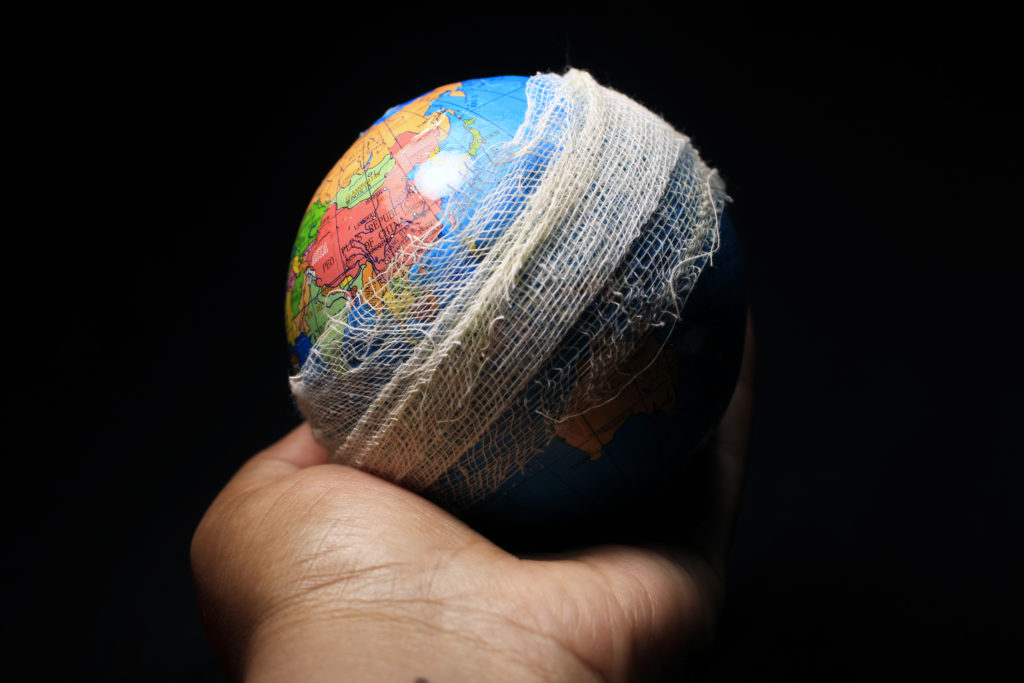
Examining the past year and looking ahead to a new normal.
by Janet Preus
Editor’s note: What our editorial calendar intended to cover and what we actually covered in 2020 presents an interesting perspective on the larger picture, overwhelmingly impacted by a worldwide pandemic. This article is a brief retrospective of the “year like no other,” and it offers some thoughts about “looking back and looking forward” from Industrial Fabrics Association International (IFAI) president Steve Schiffman.
On March 11, 2020, the World Health Organization announced that the COVID-19 outbreak could be characterized as a pandemic. Just two days later, President Trump declared COVID-19 a national emergency, which made billions of dollars in federal funding available to fight the disease’s spread. One can imagine that a textile magazine editor would be looking for a flood of press releases concerning the industry’s response. It was, however, strangely lacking. But not for long.
Many end product manufacturers quickly “pivoted” to making face masks or another type of personal protective clothing or equipment (PPE) in order to stay open, keep workers employed and offer a product for which the need was about to grow exponentially. But they needed to know how to do that: patterns, expertise, information about regulations and—most of all—sourcing the right materials and connecting with potential customers.
Grasping the problem and the solutions
Where were all these new manufacturers going to find the materials and patterns to make the PPE that was desperately needed already—by hospitals, in particular, but basically the entire population, as face coverings quickly became ubiquitous? Literally overnight, the Industrial Fabrics Association International (IFAI), had a “COVID-19 Resources” page on its website, and in the coming days stories began to pour in:
- Government agencies offered resources to manufacturers and suppliers.
- Cooperative efforts among textile industry organizations were announced to help the supply chain make connections quickly.
- Access to patterns, instructions and even machinery upgrades were shared freely to expedite transitioning to making PPE.
- End customers in need of PPE found new textile industry sources.
It was a phenomenal effort with limited national—much less international—coordination. This primarily grassroots effort, manifested by the legions of individual manufacturers, suppliers and end customers reaching out to each other—individually—every single day. Online networking sites opened up to anyone who needed the information, regardless of membership affiliation. Visiting even one of these sites was all the evidence needed to confirm the phenomenon.
It was now The Story, which we expected to be covering for perhaps weeks. Little did we know that it would be months of reporting that eased up only when manufacturers, distributors and makers of textile end products were able to revamp their operations to provide more of what was needed, and the story strangely enough became somewhat routine.
Lasting changes
This phenomenon may, in fact, have caused permanent changes in the industry. “With assistance from industry trade associations (NCTO, INDA and IFAI), I think new connections were made within the PPE supply chain,” says IFAI president Steve Schiffman. “Many companies learned just how quickly they could adapt whether that was in supplying material for PPE or to remain an essential business by manufacturing it.”
This has been a good thing, but critical challenges remain, including issues with the supply chain, “and the speed that products can get to market,” he says. Another challenge is the workforce. “Many companies were forced to reduce staffing and have been careful about when or if to bring people back.”
Although many companies pivoted to manufacturing PPE, “Many companies moved to diversify and manufacture other in-demand products to stay afloat,” Schiffman says. That will be an ongoing story and it, too, may survive beyond the pandemic.
Today’s story has also become the improvements in the products themselves: more reusable and washable PPE, antimicrobial treatments for textiles that have now completed the rigors of testing and more sustainable options for disposable PPE.
The promise of a new normal
Schiffman sees hopeful signs for the future. “I believe there will be more people back to work and we should start to have a more stable supply chain,” he says. But, like most businesses, so much of it hinges on the success of getting the pandemic under control.
“I think the most hopeful sign is the availability of vaccines around the world,” he says. “[This] is the first step in returning to a new normal and will allow people to connect in person again.”
As much as one can point to the valiant efforts of so many throughout 2020, the pandemic and its repercussions exposed holes in the system that need to be repaired, at the least. But these, too, could offer opportunities. “I can’t help but think the lessons learned will serve the industry well when we come out of the pandemic and [move] into the future,” Schiffman says.
Janet Preus is senior editor of Advanced Textiles Source. She can be reached at jlpreus@ifai.com.
 TEXTILES.ORG
TEXTILES.ORG


